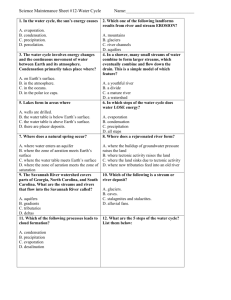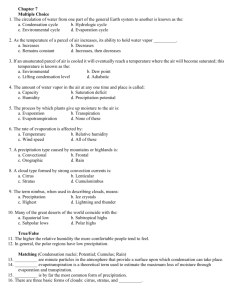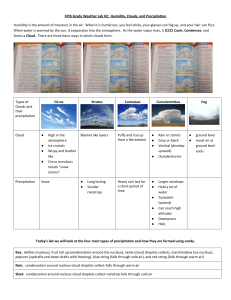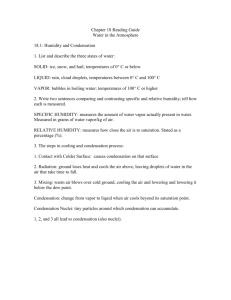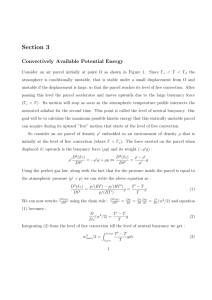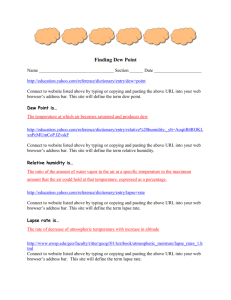Chapter 1 b Precipitation and Lift
advertisement
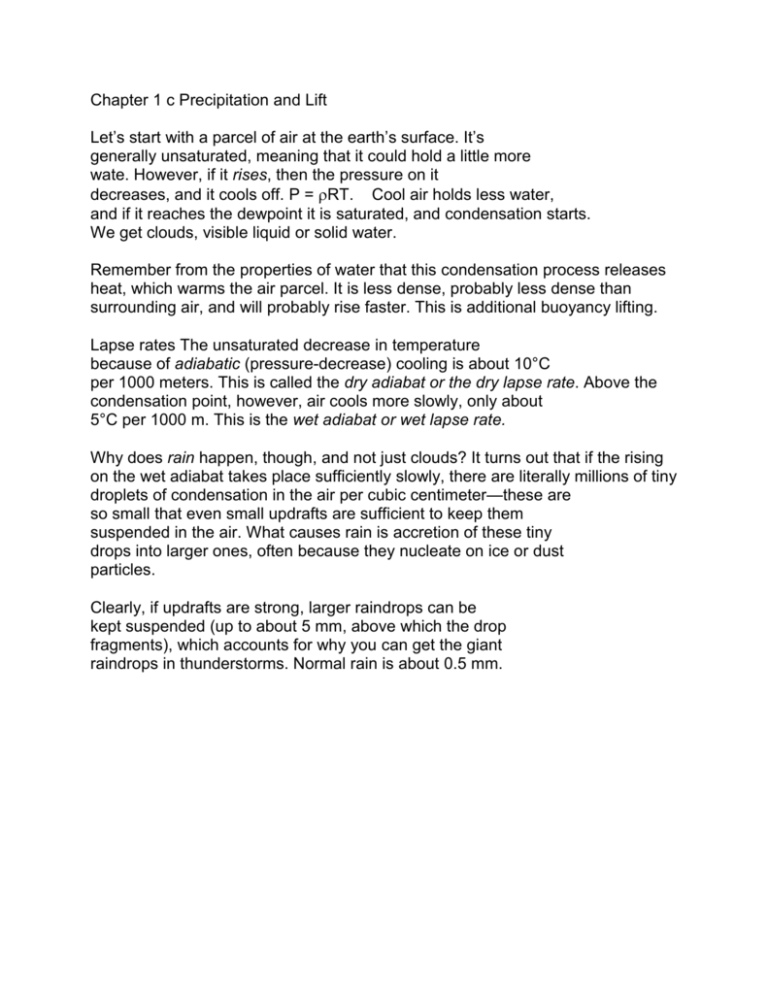
Chapter 1 c Precipitation and Lift Let’s start with a parcel of air at the earth’s surface. It’s generally unsaturated, meaning that it could hold a little more wate. However, if it rises, then the pressure on it decreases, and it cools off. P = RT. Cool air holds less water, and if it reaches the dewpoint it is saturated, and condensation starts. We get clouds, visible liquid or solid water. Remember from the properties of water that this condensation process releases heat, which warms the air parcel. It is less dense, probably less dense than surrounding air, and will probably rise faster. This is additional buoyancy lifting. Lapse rates The unsaturated decrease in temperature because of adiabatic (pressure-decrease) cooling is about 10°C per 1000 meters. This is called the dry adiabat or the dry lapse rate. Above the condensation point, however, air cools more slowly, only about 5°C per 1000 m. This is the wet adiabat or wet lapse rate. Why does rain happen, though, and not just clouds? It turns out that if the rising on the wet adiabat takes place sufficiently slowly, there are literally millions of tiny droplets of condensation in the air per cubic centimeter—these are so small that even small updrafts are sufficient to keep them suspended in the air. What causes rain is accretion of these tiny drops into larger ones, often because they nucleate on ice or dust particles. Clearly, if updrafts are strong, larger raindrops can be kept suspended (up to about 5 mm, above which the drop fragments), which accounts for why you can get the giant raindrops in thunderstorms. Normal rain is about 0.5 mm. Lift. From the preceding, it becomes clear that not only do you need moist air, but you also need that air to rise. No rise, no condensation, no condensation, no rain. What makes air rise? One cause is mountains. In order to get over high mountains, air has to rise, and this often causes precipitation on one side (this is Orographic precipitation). A second way for air to rise is frontal precipitation—warm air can be ramped up over cool air where two fronts meet. The last is simply buoyant (“unstable”) air. What happens normally to dry air is that a warm parcel of air starts to rise, but as it rises, it cools, becoming more dense than air above it, so it sinks. On the other hand, if the air is moist and/or hot it is less dense than surrounding dry air. We say it is unstable, the rising parcel will find itself warmer than the surrounding air and will continue to rise—depending on the size of the instability this can send warm, moisture laden, air to great altitudes. So how to find out what will happen? Despite Doppler radar and satellite imagery, much of the weather data collected in the US is still done the old-fashioned way, with weather balloons.

